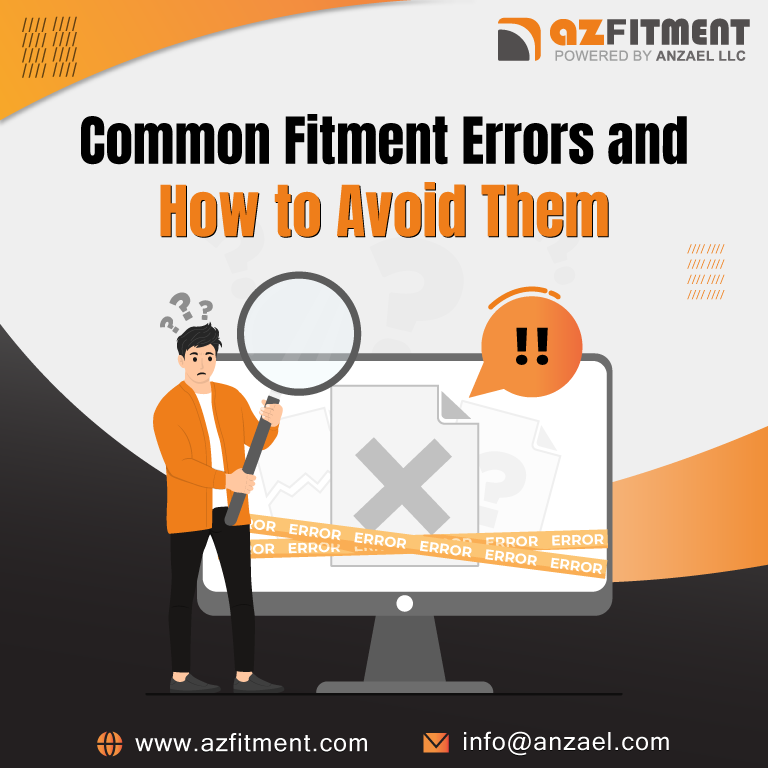Ensuring accurate fitment data is crucial for auto parts manufacturers looking to thrive in the competitive online marketplace. With countless customers relying on this information to make purchases confidently, errors can lead to dissatisfaction, returns, and lost sales.
We will explore common fitment errors, their impact, and strategies to avoid them, empowering manufacturers to improve their operations with effective Fitment Data solutions.
Top Comment Fitment Errors
Fitment errors occur when inaccurate or incomplete data prevents customers from confidently matching auto parts to their vehicles. These mistakes can take several forms, including incorrect vehicle specifications, outdated information, or incomplete catalog entries.
Common Examples of Fitment Errors
Mismatched Part Numbers
This happens when auto part numbers do not align with the vehicles listed, leading customers to purchase incompatible products.
Incomplete Vehicle Coverage
Omitting certain models or trims from your fitment data can cause gaps in your catalog, restricting sales opportunities.
Outdated Details
With new vehicle models released annually, failing to update fitment data regularly can result in inaccurate product listings.
Generic Descriptions
Lack of specificity in product descriptions can confuse buyers, increasing the likelihood of errors in part selection.
What are the Risks of Poor Fitment Data?
- Elevated Return Rates: When parts don’t fit, customers request returns, which increases operational costs.
- Damaged Reputation: Negative reviews and poor ratings directly impact trust among your buyers.
- Missed Sales Opportunities: Accurate data is essential to maximize your product reach on major platforms like Amazon and eBay.
How to Avoid Fitment Errors?
Leverage Professional Fitment Data Solutions
Investing in robust Fitment Data solutions is a game-changer. These platforms help compile, validate, and update vehicle fitment data consistently. A professional solution ensures your product listings remain as accurate as possible across all marketplaces.
Maintain Comprehensive Vehicle Data
Regularly expand your database to include all models, trims, and vehicle years available in the market. Tools that help manage vehicle fitment data can streamline this process by automating details and identifying data gaps.
Collaborate with Marketplaces
For platforms like Amazon, adhering to certification programs such as amazonconfirmedfit ensures that your fitment data complies with their requirements. This builds trust with customers and enhances your visibility across the marketplace.
Validate Data Regularly
Verification processes should be in place to cross-check fitment data before it gets updated or distributed. Whether you distribute vehicle fitment data internally or rely on external platforms, auditing ensures accuracy.
Use Standardized Communication Formats
Adopt global fitment standards like the Auto Care Association’s ACES/PIES formats when managing your data sets. These formats enable improved accuracy and reduce interpretation errors during data exchange.
Provide Clear Product Descriptions
Ensure your listings include detailed specs and visuals. Highlight compatibility for specific vehicles and trims, making it easier for customers to match parts accurately.
The Role of Fitment Solutions in Sales Growth
Accurate fitment data doesn’t just eliminate errors—it’s a vital tool to increase auto parts sales. Here’s how you can leverage it to maximize potential:
- Boost Customer Confidence: When customers trust your listings, they’re more likely to convert while recommending your brand to others.
- Enhance Search Visibility: Accurate fitment data aligns better with the search algorithms of e-commerce platforms, ensuring your listings appear in the right searches.
- Streamline Operations: Automated tools reduce manual errors and improve operational efficiency, allowing you to focus on scaling your business.
The Key Takeaways for Manufacturers
By addressing common fitment issues, you don’t just improve customer satisfaction—you also position your business for long-term success. Manufacturers who invest in Fitment Data solutions can streamline data accuracy, enhance marketplace compatibility, and scale operations efficiently. Whether you aim to manage vehicle fitment data or work with platforms like amazonconfirmedfit, prioritizing accuracy is non-negotiable.
Final Tips to Avoid Fitment Errors
- Regularly update your fitment data to keep pace with new vehicle models.
- Implement automated tools to streamline data validation.
- Establish robust partnerships with marketplaces like Amazon for better integration.
- Focus on providing detailed, user-friendly product descriptions to build customer trust.
Reducing errors and optimizing your fitment strategy will help you seamlessly distribute vehicle fitment data and unlock higher sales potential.
Take action today with reliable fitment solutions and set a strong foundation for sustainable growth in the competitive auto parts industry.
Have questions? Feel free to reach out to us by filling out the contact form here.


